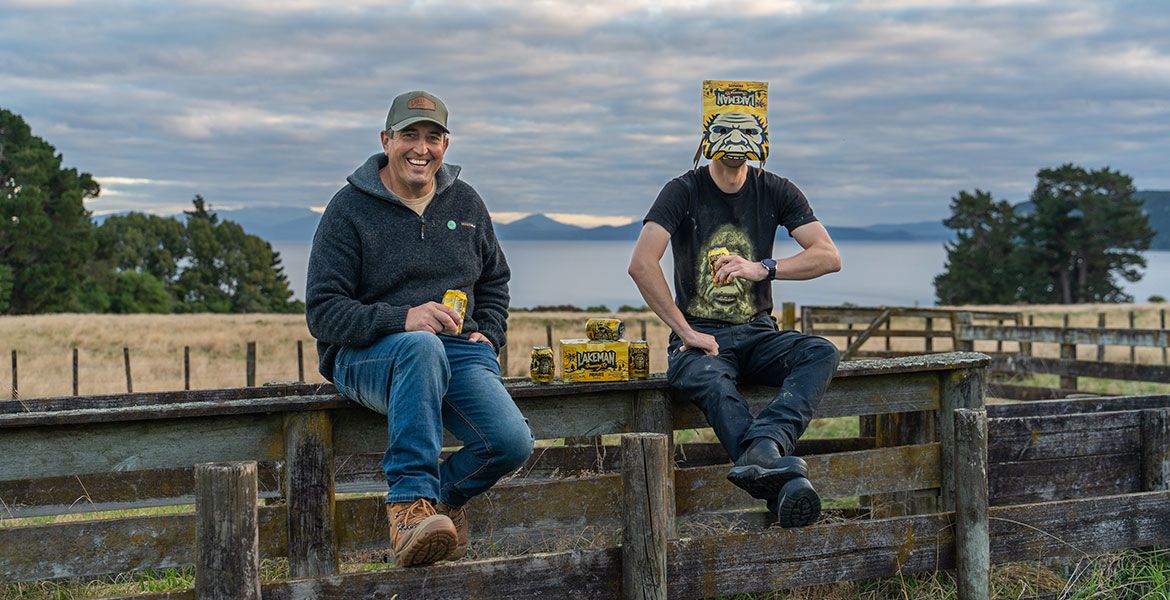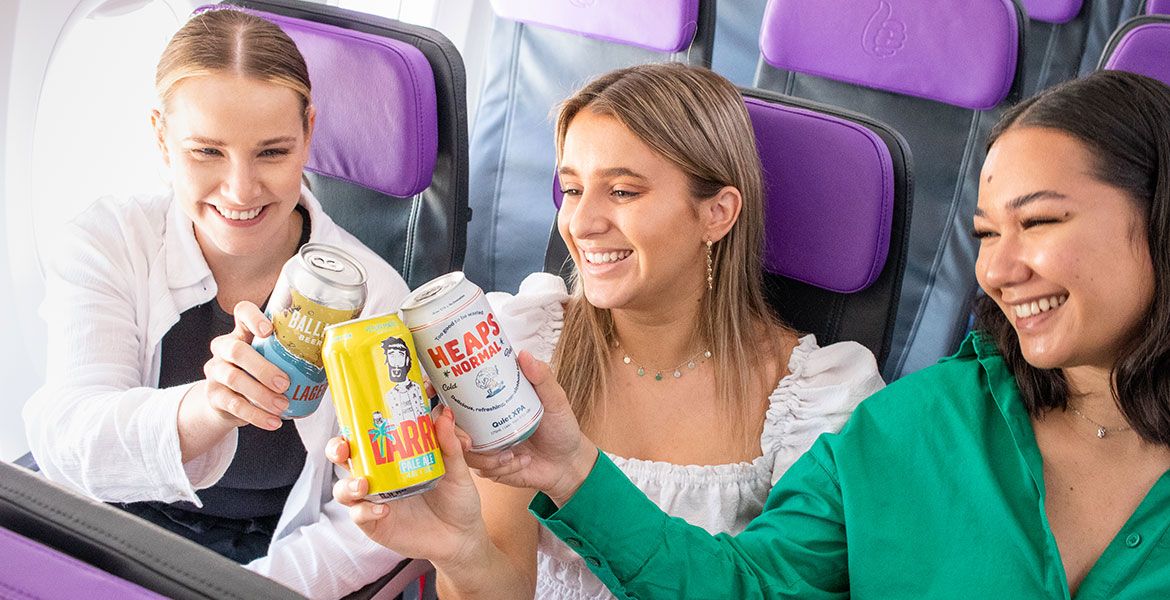The results of the third GABS Hottest 100 Kiwi Beers were announced at the weekend. Our Man In NZ, Jono Galuszka, spoke to some of the people making the stories in this year's poll.
McLeod's
The scent of hazy hoppy things has truly entranced New Zealand beer drinkers, with the broad style making up 18 percent of this year’s Hottest 100. While nearly every brewer and their four-legged best friends are making them these days, few would dispute that McLeod’s Brewing is the forebearer for the style in Aotearoa.
Founded in 2014 as an attachment to the Pizza Barn in Waipu, about a 90-minute drive north of Auckland, no one really cared about McLeod’s until Jason Bathgate (pictured below) came on board in 2016. The ex-Renaissance and 8 Wired brewer says he has turned the brewery into one that makes “some OK beer”. Well informed punters and critics will tell you McLeod’s is on a very short list of New Zealand breweries whose beers you must drink.
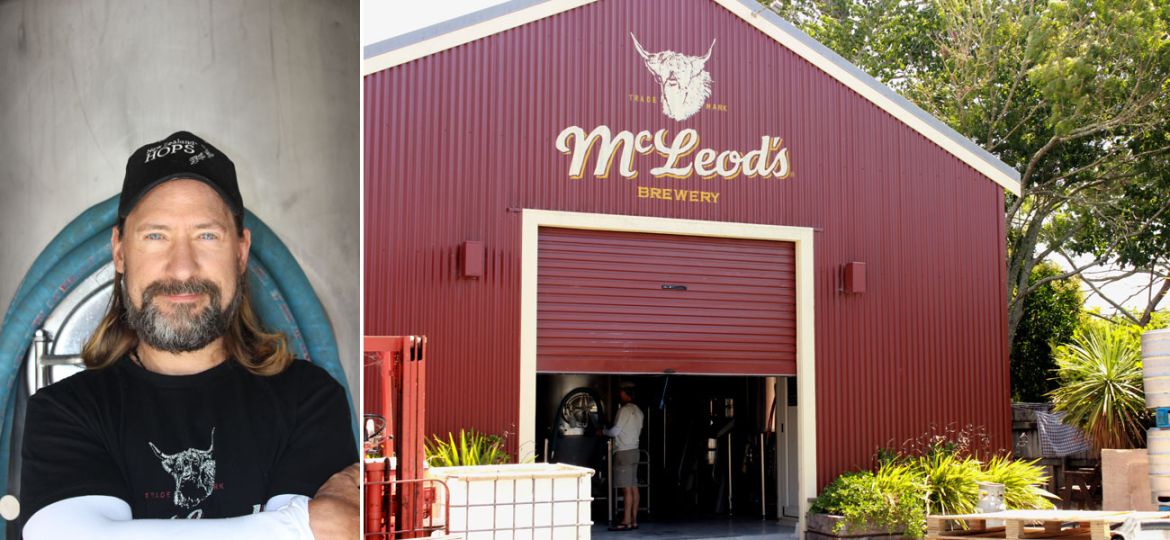
While core range beers, like Longboarder Lager and Paradise Pale Ale have gained fans, it is Jason’s 802 series (picture top left) which gets people most excited. The series, based around an ever-changing, unfiltered IPA recipe, was the first of its kind in New Zealand. The fact Garage Project and Behemoth have both followed suit – with FRESH and Drink Yesterday, respectively – must be some kind of flattery. All three series had a place in the Hottest 100 countdown, proving they are a winner with Kiwi drinkers.
Jason’s affair with unfiltered IPA goes all the way back to Vermont, the home of the style. A native of the American state, which has the area code 802, his local pub ≠ a four-mile walk from his house – was The Alchemist. He got on first name terms with owners Jen and John Kimmich, the latter being the genius behind the most iconic hazy hoppy thing of all: Heady Topper. It was at The Alchemist where Jason had his first experience of unfiltered IPA.
“Drinking John’s beers was a big wake up call,” Jason says. “I enjoyed beer, but having that freshness... and always a haze there. It was unique and always mesmerising.”
The release of Heady Topper, however, took things to another level. People would queue around the corner to get a taste of it. Jason witnessed people taking pints into the bathroom to only pour the beer into containers, enabling them to smuggle the beer away from the bar.
A yearning for The Alchemist’s beers is the reason Jason got into homebrewing in New Zealand. He simply wanted a way to drink the beers he used to drink. Even when he got a job at Renaissance, he would tinker on the weekends with unfiltered recipes. He tried making one when at Renaissance, and gives a blunt review: “It was fuckin’ horrible.”
The 802 series beers, though, have been a wild success for McLeod’s. Sold out as soon as they are in the fermenter, Jason mainly messes with hop varieties and addition times and water chemistry to create new recipes. Having a massive range of hop varieties from New Zealand, Australia and the United States inspired Jason to create the series as a way to exercise his creativity and experiment with new hop varieties.
“It is a playground, a great place for us to play around,” he explains.
Jason puts the success of hazy hoppy things down to the distinction between them and what was the dominant style in New Zealand for so long: sharp, lean, bitter, aggressive West Coast style IPAs.
“[Unfiltered IPAs] have got that great tropical fruit profile, are softer and have a great mouthfeel.”
But there are secrets to making a good one. Jason says The Alchemist’s beers eschew adjuncts like oats and wheat, and his are never purposely hazy.
“I have said it from day one: it’s never about making a hazy beer. It’s about making a fresh, unfiltered IPA. Nail the IPA part and the haziness is the byproduct.”
There should, of course, be some kind of haziness. The brighter ones Jason has tried from other breweries lack the mouthfeel the style needs to accentuate that juiciness people rave about in the best unfiltered IPAs.
“They feel quite flat and taste like a fruity West Coast IPA, and also lack the mouthfeel that I think is really really important to that particular style.”
What research by brewing labs has show is how important beta acids are, Jason says. Alpha acids were often seen as the most important part of a hop, with beta acids almost treated like an appendix – they are there, but useless. But Jason says ongoing research into unfiltered IPAs is showing beta acids are attaching to the proteins which creates the trademark haziness of the style.
“They are holding onto more hop aroma and flavour compounds," he says. "[Scientists] are finding betas do have a purpose for those particular styles.”
The 802 series is not massively profitable for McLeod’s – that’s what you get when you’re adding 20 grams of expensive hops per litre of beer – but give the brewery a great reputation. Only the best customers get the keg-only 802 releases, and have to release them as soon as they arrive in the pub.
“We have 100 people on the list for kegs,” Jason says. “If they hold the kegs, they are now on the bottom of the list. The kegs are not supposed to sit around.”
The pressure to brew more of each 802 release is there, but Jason wants to keep a leash on McLeod’s growth. He only wants his beer sold in places that have continuous cold chain from brewery to consumer, immediately limiting possible outlets. But that helps the brand grow steadily, which is perfect in Jason’s mind.
“We don’t want a meteoric rise, because that’s when you make huge mistakes," he says. "Our reputation is our biggest thing. We can’t start putting out substandard product, because that’s going to bite us really hard."
Behemoth
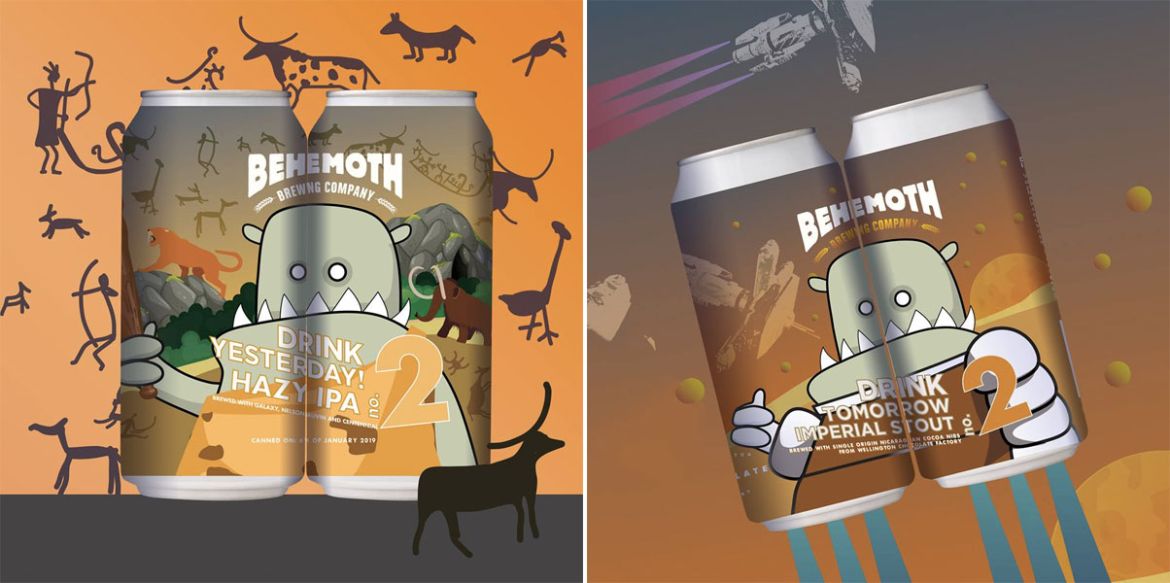
If anyone was going to keep up with Garage Project’s titanic 25 beers in the Hottest 100, it was Behemoth. McLeod’s may be the model for gradual growth, but Behemoth is the opposite. The company increased its staff by 50 percent on a single day, went from exporting from two countries to 11 in 2018, and seems to have a new release on the market almost every other week.
Known as Chur in Australia due to a trademark issue with KAIJU!, Behemoth, from the outside, appears to be wildly successful. Consistently near the top of public polls, sold in almost every supermarket in the country, Behemoth is well known.
No other brewery had a beer get as big in New Zealand in 2018 as Andrew Childs' operation thanks to the re-release of Dump The Trump. Putting the beer – initially launched during Donald Trump’s 2016 run for election – back on the market in May saw Behemoths’ Facebook page invaded by MAGA-hat-wearing Trump lovers giving the brewing company one-star reviews only to see beer lovers fight back with far more five-star ones. The saga saw Andrew telling the brewery’s story on the nation’s most popular morning news show and live morning TV. It was the kind of marketing you cannot buy, but is priceless when it comes along.
So, why would Andrew look at making life more complicated for himself? Because he hopes 2019 will be the year he and his wife Hannah finally realise a long-held dream: opening a brewpub-cum-butchery, combining his brewing talent with her business A Lady Butcher.
Why, when you have a wildly successful model, would you switch to something that has many more moving parts? Why take on more risk?
“I think we just need a home,” Andrew says, albeit after a very long pause. “We just need somewhere to show what we are all about. I think we just want to be the masters of our own destiny. If something goes wrong, we want to blame ourselves.”
Behemoth currently splits production between bStudio in Napier and Deep Creek and Steam in Auckland. The lack of infrastructure may sound like an advantage, but it makes Andrew’s job a logistical nightmare. There are already plans to store more beer under one roof, but sorting out brewing and distribution between three different facilities keeps him busy.
The brewpub should bring all Behemoth production under one roof in time – Andrew plans to have enough space to produce one million litres per year once deals with contract partners are fulfilled. But he thinks opening the brewpub while having the contracts in place will be freeing, not restrictive.
“If the beer is not amazing when we open, we can pour it down the drain,” he says. “We don’t release bad beer – we have a reputation to maintain – so [contracting] will take the pressure off.”
The thinking is that having cash flow from the established side of the business will give the brewpub time to slowly grow, instead of having the pressure on from the start.
Andrew and Hannah have already shown people through their Mt Eden brewpub site, and plan to launch a crowdfunding campaign later in 2019. Andrew sees the brewpub becoming a key link in the Auckland craft beer scene, helping create the same kind of walking bar crawl Wellington has developed with its Craft Beer Capital campaign.
“We want to have a really cool beer city,” he says. “Ever since I moved from Wellington there has been really cool stuff here, but you haven’t been able to visit five places in one day. I’m excited to be part of, and really spearhead, that.”
Behemoth has also been at the forefront of the hazy hoppy thing movement, with its Lid Ripper coming fourth in the Hottest 100 and winning golds at the New World Beer and Cider and the Brewers Guild of New Zealand awards. His unfiltered IPA series, Drink Yesterday, is released in conjunction with a line of big, boozy stouts dubbed Drink Tomorrow (both pictured above). The latest editions were released in January. While putting out an unfiltered IPA may be a sure bet in the middle of summer, it is no surprise to hear Andrew say the latest Drink Tomorrow ≠ an imperial stout with lactose and single origin Nicaraguan cocoa nibs – has not sold as well. But that has not deterred him.
Sure, he says stouts have their place in summer, especially around the BBQ or on cooler nights. But he sums up his decision behind the series, and everything he does, in two words.
“It’s fun.”
Brave
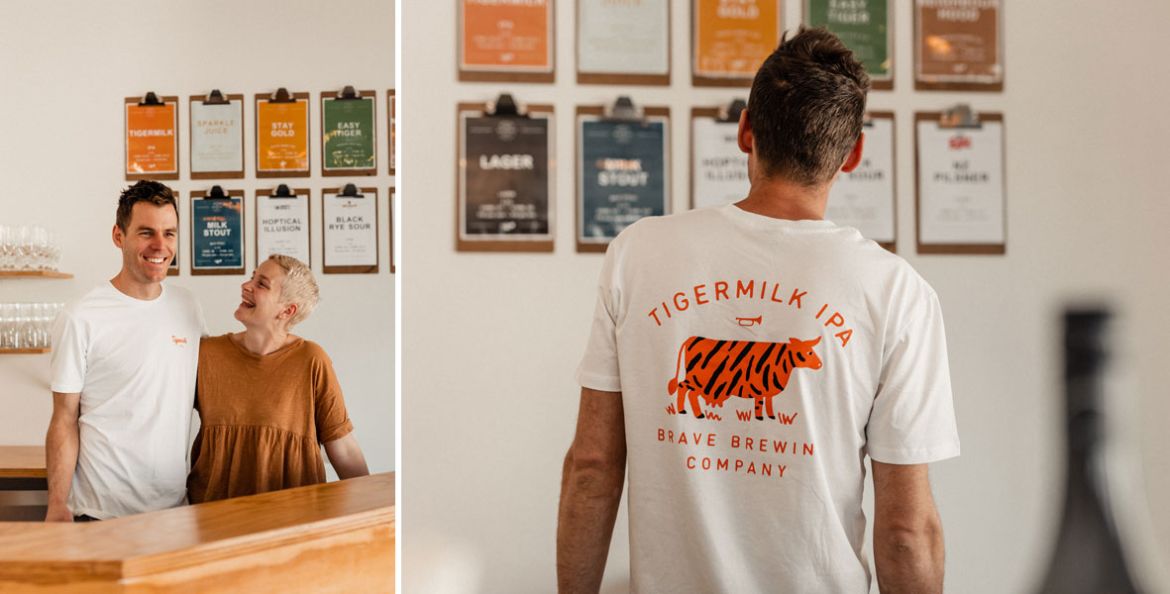
The provinces did it tough in the Hottest 100, with just eight beers from outside Auckland and Wellington making the cut. While the likes of Lion-owned Emerson’s and cult favourites McLeod’s were likely to make the list, Hawkes Bays’ Brave Brewing was perhaps a surprise addition. But they are more than welcome, with their Tigermilk IPA (ranked 77th) boasting one of the best names (borrowed from Scottish band Belle & Sebastian's debut LP) and labels of any beer on the list.
There is something undeniably Kiwi about having a cow as the mascot for a brewery’s flagship beer, considering the country’s position as a dairy powerhouse. But it is no normal cow. The cow is portrayed as a cartoonish tiger-bovine crossbreed on a resfreshingly clear label. It perfectly reflects the beer in the bottle – based on a familiar style, but charmingly unique enough to carve its own place in an ever-more-crowded New Zealand market.
While the national acclaim is totally deserved, it's not what Brave co-owner Matt Smith planned for. His focus has been on the province Brave resides in since it launched in 2013. He and wife Gemma, both Hawkes Bay natives, moved back home after spending time in Auckland. Going from the country’s most expensive housing market to a province meant the pair had enough cash to turn their garage into a 300-litre brewery. Matt winning champion brewer at the National Homebrew Championships, run by consumer lobby organisation the Society of Homebrew Advocates (SOBA), that same year supplied all the confidence they needed.
But running an industrial brewery from a residential house hit a wall in 2017, when Brave moved from the garage into the shell of a high-end light fitting shop in Hastings. Already built for retail out front and manufacturing in the back, it was the perfect site to morph into a tasting room. But Matt did not expect things to escalate as fast as they did.
“Talk about a crash course in hospitality,” he recalls. “The first night we opened was the first time I had worked behind a bar in my life. We had to change our business model pretty quickly when we realised how busy the tasting room would be.”
The success means the Smiths are looking for a second taproom site. But, unlike Garage Project, whose two taprooms are in Wellington and Auckland, nearly 650 kilometres apart, Matt says their second will be in Hawkes Bay.
There is good reason to focus on Hawkes Bay. More than 80 percent of Brave beer is sold in the region.
“As we have progressed we have realised that Brave being a regionally-focused brewery is really important to us,” Matt says. “There is a sense of local pride and patriotism here. Just by the nature of being regional, everyone seems to know each other a bit more, and maybe feel more of a connection to the places they go."
More than 80 percent of Brave beer is sold in Hawkes Bay, either through the taproom or in local bars, cafes and bottleshops; initially, they started selling beer through a local farmers market. While a great way to get beer into the hands of tourists, Matt says the market also attracts those in the hospitality industry looking for new products to stock. That gained the brewery on-premise clients early without either of the Smiths needing to get on the road to do sales.
“We are able to cruise around Hawkes Bay and have face time with people, have that connection," Matt says. "That would be hard to keep up if we were sending lots of beer around the country.”
Tigermilk is one of the few Brave beers to get wide distribution. Initially a special release, customer demand saw it become part of the core range and, now, Brave’s flagship. It, like many of Brave’s beers, is on the drinks menus at Hawkes Bay restaurants. It's a situation that makes it difficult for Matt to come up with new one-off beers, as the brewery is kept busy brewing core range beers. Even quadrupling the brewhouse size from 300 litres to 1200 litres a year ago didn't help alleviate demand.
“We have always been at capacity, always on the back foot keeping up, so there is no room to play around,” Matt says. “My biggest priority this year is figuring out how to make room for a bit more creativity.”
You can check out all of our coverage on the Hottest 100 of 2018 in Australia and New Zealand here. Aussies in the mood for a taste of Kiwi beers – including some in the country for the first time – can check out the events taking place as part of A Little Taste Of Aotearoa.
You can read more of Jono's articles on the New Zealand beer scene here and other NZ stories on Crafty here.
Keep up with Jono elsewhere on the internet via Twitter or his beer blog From Drinker to Brewer, which you can also follow on Facebook.








